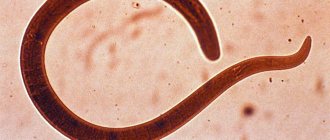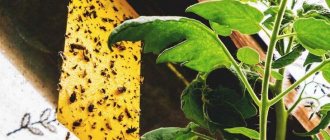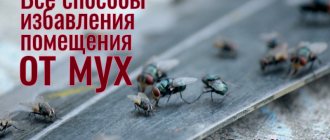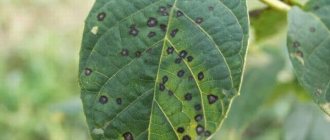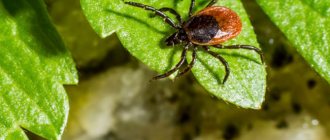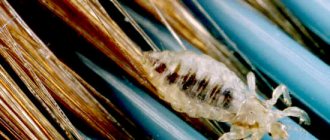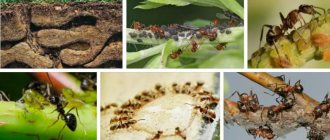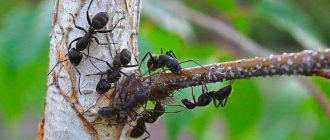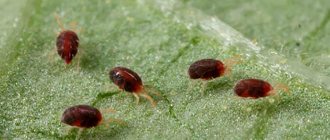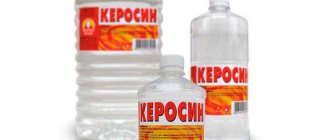Every summer resident is looking forward to the opening of the season. During the winter period, people who prefer active recreation at the dacha to trips to the sea prepare seeds, plant seedlings, and then carefully care for them. With the onset of the first warm days, all this is taken to the dacha and planted in the ground. However, when it gets really warm, problems begin with the invasion of small midges and mosquitoes.
Holidays in the country
There are no people who are not familiar with the unpleasant phenomena caused by mosquito bites. However, not everyone knows that the invasion of midges not only harms the plants in which so much work has been invested, but is also dangerous for people, since their bites, invisible at first, cause much more negative consequences.
Popular ways to combat midges
Since the country fruit midge is a difficult insect to remove, and the problem of combating it is very urgent, manufacturers offer many drugs, under the influence of which the midges die. And if folk remedies are powerless, more effective measures should be taken.
Cifox
Digital insect repellent
This product is specially designed to kill midges, mosquitoes and other flying insects in natural conditions. The basis of this product is the substance – cypermethrin. If the area is sprayed with this preparation, the insects die instantly, and re-treatment of the summer cottage will be required no earlier than after 6 weeks.
This product is available in the form of a concentrated liquid solution, which is diluted with water according to the instructions. The resulting solution should be sprayed on areas where midges accumulate. In this case, the ready-to-use product can be stored for no more than 8 hours.
Insect exterminator "Ecosniper GC1-16"
This device effectively repels both midges and mosquitoes, as well as other insects. At the same time, you can use it at home or at your summer cottage. This model is capable of covering an area of 50 m².
The basis of the device consists of an ultraviolet lamp, which emits heat similar to human heat. Midges, flying up to it, try to penetrate the mesh, as a result of which they die from an electrical discharge.
Ecosniper GC1-16
The device can be installed on any flat area. However, it should be provided with reliable protection from rain and moisture penetration or used only in dry weather. The lamp also requires periodic cleaning from insects.
It should be noted that the device supplies a low current, which, although fatal to insects, is absolutely safe for people and pets.
Fumigator ThermaCELL Patio Lantern"
This device is made in the form of a lantern, which can be used as decorative lighting. It can be installed in any area of the dacha, including gazebos and terraces. The main advantage of the flashlight is that it is battery powered and absolutely silent.
Fumigator ThermaCELL Patio Lantern
As an insect killer, a special product is used that, when heated, emits natural odors. The area it covers is 20 m².
Fruit midges
There are more than 2 thousand species of fruit flies, but the most common of them is the Drosophila. This type of midge also breeds in places with high humidity.
Fruit midge (Drosophila)
A cluster of midges and mosquitoes can also be observed in an area covered with tall grass. If midges suddenly appear at your dacha, there may be decomposing waste somewhere on the site.
In general, to get rid of midges, you need to deprive them of food. It should be remembered that midge larvae develop in decaying plant debris, including vegetables and fruits.
Drosophila control agents
If the cause of the appearance of midges is high humidity in the country, no means will help get rid of them, since plants need moisture. However, you can look for other reasons, for example, grass. Tall grass is a favorite habitat for midges. Therefore, cleaning the area with a trimmer or hand scythe will help eliminate hordes of insects.
Cleaning the area with a trimmer
If there is a compost heap at your summer cottage where all food waste is disposed of, they may be the cause of the appearance of midges. Then you will have to look for another way to dispose of them, otherwise the midges may win the fight.
In order for the midge to leave the garden plot for a long time, you can first try a harmless remedy that will not require financial costs and will not harm anyone except the midges. These methods include traps.
Midge traps
- Bait in the form of pieces of fruit, juice or compote is placed in a glass jar. A paper funnel is inserted into the neck of the jar, the joint of which is sealed with tape. In this case, the hole at the end of the funnel should be very small. Thus, the midges will flock to the smell of the bait and penetrate into the jar, but they will no longer be able to get out, since the small hole in the funnel will be very difficult to find.
- Bait in the form of fruit, sweet liquid or leftover yogurt is placed in a plastic cup. A cling film is stretched over the top of the glass, in which holes are made with a thick needle. Such a trap is installed in places where midges accumulate.
- Apple cores, preferably sour, are placed in a plastic bag. The midges will certainly crawl into the bag and begin to develop vigorous life activity in it. After this, the bag is simply tied and thrown away.
Folk remedies in the fight against midges
There are different types of midges: some bite a person, while others devour fruits in a summer cottage.
- Blood-sucking midges (midges). These are annoying insects that get into your nose, mouth, ears, and are very difficult to drive away. Moreover, only females bite humans and animals. The bite of such a midge is easy to distinguish from a mosquito. The midge bites off the top layer of skin, and a slight swelling appears in this place, which lasts up to 5 days. Such a bite rarely causes allergic reactions, but it causes a lot of other unpleasant sensations: it itches, “aches” and spoils the appearance.
- Fruit midges and pests. If your summer cottage is located next to a body of water, the chance of fruit flies appears increases, as they live in damp places. Insects can also live in thickets of tall grass and in compost heaps where food waste is disposed of. They do not bite humans, but they do damage plants growing in the garden.
Fighting blood-sucking midges
Midges cannot tolerate strong odors, and in the fight against them you should definitely take this factor into account.
- Vanillin. Vanillin is usually dissolved in water (10 g of vanillin per 500 ml of water), less often - in vodka. The resulting liquid is poured into a spray bottle and treated exposed areas of the body.
- Alcohol infusion of valerian. It is also poured into a spray bottle and treated with it on skin and clothing.
- Decoction of wormwood root. To prepare it, pour a handful of crushed root into 1.5 liters of water, put it on the fire and bring to a boil. The cooled decoction is used to treat exposed areas of the body to protect yourself from midge bites.
- Wheatgrass root. This plant also repels small midges and mosquitoes. It can be laid out in ventilated places: on the windowsill, next to the gazebo, at the threshold.
Pest Control
To save the crop from pests, summer residents prepare various infusions, decoctions and solutions, many of which are effective both in open ground and in greenhouses.
- Celandine decoction. About 400-500 g of crushed leaves and stems of celandine are poured with a liter of water, covered with a lid and left for a day. Then the mixture is put on fire, brought to a boil and simmered over low heat for 20-30 minutes. After straining the broth through cheesecloth, it is poured into a bucket of water and left for another two days. The plantings are treated with the product, and after 5 days the procedure is repeated.
- Garlic or onion infusion. A tablespoon of chopped onions or garlic cloves is poured into a glass of boiling water. After an hour, the infusion is filtered and the affected stems and leaves are treated.
- Dandelion infusion. To prepare it, you need to take 500 g of dandelion leaves and roots and chop them finely. The raw materials are poured with 5 liters of hot water and left for 24 hours in a warm place. Then add 1 tablespoon of ground red pepper and 2-3 tablespoons of finely chopped laundry soap to the water. The mixture must be thoroughly mixed so that the soap is completely dissolved. The beds with affected plants are sprayed with the infusion.
- Infusion of tobacco. You can use regular tobacco, which is sold by weight. To prepare the infusion you will need about 50-60 g of raw materials. Tobacco is poured with 1 liter of warm water and left in a dark place. After 5 days the product can be used. Plants are treated every 3 days until the pests completely disappear.
- Liquid soap. In 1 liter of warm water, dilute 4 tablespoons of liquid soap without aromatic fragrances and dyes, the same amount of vegetable oil and 5 chopped garlic cloves. The product is stirred and left for an hour, after which it is filtered and the beds are treated.
Mining flies on vegetables
Mining flies can cause serious damage to plant leaves. The main danger of these vegetable midges is due to their very short life cycle (about 25 days). This means that 4-5 generations of incredibly voracious little pests appear per season.
Female leaf miners pierce plant tissue to suck sap or lay eggs. In addition, by piercing the surface of the leaf, they are able to transmit pathogens of various diseases.
Consequences
Causes and signs of appearance
The main causes of infection are planting plants close to each other and the lack of preventive measures.
The first sign of damage is puncture marks left by female leaf miners. Further on the leaf, light stains become noticeable, which are the passages of the larvae.
How to fight?
In open ground, the chemical method is most often used. Spray products containing pyrethrum work effectively. Treatment is carried out 5-6 times with an interval of three to five days.
Traditional methods are effective for small infestations. They are similar to those used to control other pests, for example, cabbage fly.
Signs of the appearance of cabbage fly and methods of combating it
Signs of the presence of cabbage fly larvae in the roots of the plant are stunted growth and wilting of the leaves. Midge larvae in cabbage can destroy a crop in just a couple of weeks. The fight against them must begin immediately after their discovery.
Methods to combat cabbage fly:
- eliminating all cabbage residues from the garden after harvesting;
- correct crop rotation - do not plant cruciferous crops in the same place;
- a ban on the use of garden soil for growing seedlings;
- soaking the seeds for 1-2 hours in a slightly pink solution of potassium permanganate;
- regular digging of beds;
- covering seedlings after planting;
- the use of insecticides and folk remedies if preventive measures did not help and infection occurred.
What you need to know about pest control
Aphids multiply rapidly; one individual can give birth to about a hundred babies; getting rid of them is not so easy. Before using various means, it is worth finding out the reason for its appearance:
- The aphid tries to sap the plant by breaking through the tender stems with its proboscis. It usually affects young plants. The first thing to do is to protect the young pagons and leaves.
- Pests lay their eggs in the root system, where they overwinter. Before wintering, carefully inspect the root system. Aphids are also carried by ants; it is worth protecting their access to the pagons and leaves.
- Aphids have many natural enemies. You can try to attract them to your garden or vegetable garden. Wasps, flies and ladybug larvae cope well with pests. It is worth planting onions or garlic on the site; its smell repels aphids.
- Aphids are destroyed by several species of birds: tits, warblers, wrens, wrens, linnets, robins and sparrows. They all feed their young pests.
Infection of a plant with aphids is indicated by deformation of the leaf; a sweet discharge (honey dew) appears on it. The leaf begins to turn yellow and curl. If ants are crawling around the bush, this also indicates that it is infested with aphids.
Midges in the apartment: types and causes of appearance
Typically, the appearance of flying insects in houses and apartments begins in the warm season. But midges are a special case: they can appear at any time. To get rid of them, first of all you need to determine the source of insect spread. Midges are often confused with small flies and even mosquitoes - but unlike these “vagrant” pests, the former more often end up in a room with new plants and food. There are two types of house flies:
- Fruit (kitchen, fruit) midges. Drosophilas circling over food do not pose a threat to humans. But if you eat fruit infected with larvae, you can get indigestion. Kitchen midges are highly fertile - the female lays from a couple of hundred to one and a half thousand eggs per day. Drosophila live on food, but they can get into the house through animal hair, street clothes and shoes. Their favorite food is rotting organic matter, so midges quickly infest both in stale apples and in pets' bowls, in spilled yogurt and the remains of wine in a glass.
- Ground flies. If you notice insects near your indoor plants, the cause is most likely due to overwatering. Moist soil is an ideal environment for sciarid eggs to be laid. Insects enter the premises through ventilation and garbage chutes, from the basement, from the entrance and from neighbors. It also happens that an infected plant is brought from a store. One midge does not live long - from a week to two, but during this time it manages to lay larvae in most pots with plants.
Popular technical means
There are modern ways to deal with midges in an apartment. These include ultrasonic repellers - stationary and mobile. The latter are much more convenient to use. They operate using batteries and are light in weight and size.
However, their radius of influence is small - approximately 2.5-3 m. Therefore, such a device for repelling mosquitoes and midges cannot completely get rid of them, although it is quite effective as a personal protective equipment.
The radius of influence of stationary repellers is much larger, but they require an electrical connection to operate. The principle of action of both mobile and stationary devices is the same - repelling insects using ultrasonic radiation. The most popular devices of this type today are:
- “Tornado”, which protects the room from midges over an area of up to 55 m²;
- “Typhoon”, protecting an area of 20 m², although when operating in maximum mode, its protection zone can extend to 45 m². This repeller operates from the mains, so in areas where there is no voltage, it is completely useless.
How to be sure to get rid of midges and mosquitoes in the country - folk and technical means
An eternal problem that any owner of a plot of land has to solve is effective protection against insects, which in the summer literally attack not only animals, but also people.
Otherwise, there can be no question of having a good rest at your dacha or working on your hundred square meters, since most of the time you will have to literally fight off mosquitoes and midges. Various ointments and creams, which are sold everywhere, are one of the effective means of repelling them. But this method has disadvantages - some people are allergic to the “chemicals”, and they do not differ in the duration of action, although many are not cheap. How else can you protect yourself from blood-sucking insects or completely protect your area from them? A brief overview of the most common methods will allow you to choose the best option for ridding your dacha of the dominance of midges and mosquitoes.
How to distinguish from a tomato mosquito?
You should get rid of pests immediately, but first of all, you need to determine exactly who is spoiling the crop. The tomato mosquito is very similar to the winged aphid, but it does a little less harm. The main difference between pests is the breeding season. The mosquito most often attacks seedlings, since it appears precisely during this period of time, while aphids hatch during the flowering period.
The mosquito is twice as large as the aphid; it damages the plant in a similar way, drinking the juice, but prefers to start from the top of the bush. Mosquito larvae are located in the ground, and therefore can damage a tomato from the root, especially with a large number of worms reaching 8 mm in length
They feed on roots, so it’s important to be careful
Popular brands
Gardex
to the store For more than 12 years, the Gardex brand has been producing safe and affordable products to protect the whole family from mosquitoes, including their little consumers. The manufacturer guarantees the complete safety of the products used and the naturalness of the composition of the products offered. The assortment is varied: electrofumigators, liquids, ointments, gels, sprays, clips, bracelets, etc.
Mosquitall
to the store The manufacturer of repellent products under the Mosquitall brand offers a number of series of these products, designed both for extreme conditions (but at the same time not suitable for children, but ideal for hiking in the forest, etc.), and on a natural basis for children and teenagers. There is also a series of creams designed to treat areas after bites.
Picnic
The store offers high-quality and affordable products of its own Picnic brand, which are made from natural extracts and active ingredients.
Among the series produced are: Baby, Bio Active, Extreme, Family. to the store The Raid brand has been known to everyone for quite a long time and has already managed to win the trust of its consumers. And although they do not have a separate series for small children, basic basic products, such as fumigators with liquid or plates, aerosols against flying or flying and crawling insects, perfectly help protect and clean the room. vote
Article rating
How to control pests on seedlings
Before choosing and starting to use methods for getting rid of small insects, the top layer of soil should be dried and then assessed to what extent the soil is affected by midges. If the infection is not large-scale, it can be dealt with. It is imperative to separate affected boxes with seedlings from clean ones so that midges do not move to healthy plants.
To destroy pests, chemical and folk remedies are used. And with their combined use, you can achieve a more powerful result.
In case of severe infestations, the soil is changed. To do this, the seedlings are washed and planted in clean soil.
Chemicals
Insecticides against midges and other insects have several forms of release:
- Aerosols that are enough to spray on insects (Dichlorvos, Raptor, Raid).
- Granules and powders that are poured into the ground, as a result of which the midges die (Grom-2, Karbofos, Aktara).
- Solutions that are poured into a spray bottle and sprayed onto plants (Agravertin, Bazudin, Fitoverm).
The treatment must be carried out using protective equipment (gauze bandage and gloves). Insecticides contain toxic substances, so if used incorrectly or if the product gets on the skin, there is a risk of poisoning or irritation.
Table: popular remedies for midges
Drug Cost Rating Active ingredient Precautionary measures How to use Aerosol Dichlorvos Neo 80 rub. 4.4 cypermethrin; permethrin; tetramethrin; piperonyl butoxide; diethyltoluamide; dimethyl sulfoxide
Be sure to use a respirator, gloves and overalls to cover all areas of the skin. Hold the balloon at arm's length at a distance of 20 cm from the floor. Spray in a vertical position. Ventilate the room for 2 hours.
GranulesGrom-2 15 rub. 4.6 30 g/kg diazinon Carry out treatment in a respirator, gloves, and goggles. After washing your hands and face with soap, rinse your mouth. Dig grooves around the plants - up to 2 cm deep. Sprinkle the preparation. Sprinkle with soil.
Akarin solution 20 rub. 5 Avertin-N - 2 g/l Do not mix the solution in food containers, carry out processing with glasses, gloves, a respirator, boots
Afterwards wash your hands and face with soap. Mix with water. Pour into a sprayer. Treat the plants.
Folk remedies
Many people who like to grow plants to fight insects choose traditional methods because they consider them safer than insecticides. Let's look at recipes for the most effective home remedies.
A solution of manganese will get rid of midges in 2-3 days. The method for preparing it is as follows:
- Dilute a few grains of the product in a liter of water.
- Stir thoroughly.
- Water the soil with the solution.
Dandelion juice with the addition of red pepper also repels pests. The recipe for making it is simple:
- Pour 1 kg of fresh dandelion leaves and roots into 10 liters of boiling water.
- Leave for 24 hours.
- Add 50 g red pepper.
- Stir.
- Spray the soil and the plant itself.
Celandine copes especially well with black midges. You can prepare an infusion from this plant as follows:
- Pour 300 g of celandine leaves into 1 liter of boiling water.
- Leave for a day.
- Boil for 30 minutes.
- Cool and strain the broth.
- Dilute in 10 liters of water.
- Spray the seedlings.
- Repeat the procedure after 5 days.
Wood ash, if sprinkled on the ground, will also help get rid of midges. A clove of garlic buried in the ground will repel insects. Using the latter method, you can sprinkle the soil with tobacco dust.
Chemical preparations for midges in the country
Small midges are difficult to remove insects, and it is not always possible to get rid of them after the first attempt. If traditional methods are powerless or you trust store-bought products more, pay attention to chemicals.
- Digital. A product for killing mosquitoes, midges and other flying insects in natural conditions. After treating the area, the pests die. Repeated treatment is recommended no earlier than 6 weeks after the first. The drug is available in the form of a concentrated solution, which must be diluted with water before use.
- Mospilan. Plant treatment product. Destroys adult mosquitoes, eggs and larvae of midges. The effectiveness of the drug is maintained at elevated temperatures. The product must be dissolved in water. The effect is observed within an hour after treatment, and the protective effect lasts about 2-3 weeks.
- Phosbecide. Available in the form of a concentrate. Suitable for both killing household insects and pest control. The effect of the drug is 2-3 weeks. It is not recommended to carry out treatment during the flowering period of plants, in hot weather (at temperatures above 25 degrees), before rain, or when there is dew on the leaves of plants.
Attention! It is recommended to treat the area with chemicals in the early morning or evening in calm weather.
Types of midges
Sciarids, black soil mosquitoes, are found on seedlings. Whiteflies appear less frequently and attack leaves and stems. Adults drink the juice of the plant and weaken them.
Drosophila flies live on indoor flowers, rotting fruits and vegetables. They are small, dark brown, and multiply quickly. Green lacewings destroy aphids and do not harm plants.
Black midges appear due to waterlogging of the soil. This is typical for cold window sills with no air circulation. These two combinations create ideal conditions for the laying of eggs from which the larvae hatch. It is they, and not adult insects, that cause the most damage to seedlings.
Midges appear after heavy use of organic fertilizers. This creates a breeding ground for hatching larvae - warm and humid. Sometimes seedlings get bugs from indoor plants that are already infected.
Insects can be found in the ground, on stems or leaves. They remain invisible for a long time. Therefore, they are discovered only after the midges have seriously multiplied and their numbers have reached frightening proportions.
Onion fly
A small fly, up to 8 mm long, a gray-yellow body with longitudinal stripes and two transparent wings. Females lay oval, white eggs in the bulbs of flowers and vegetables, from which larvae emerge a few days later, about 8 mm long.
They make passages in the bulbs, this leads to their rotting. The onion feathers turn yellow and a specific smell appears. The larva develops for about two weeks, then as an adult it moves into the soil and pupates. In one season, a female is capable of giving birth to three generations.
To avoid infecting plants with onion fly, you need to observe crop rotation and correctly alternate the planting of vegetable crops in the plots. You can’t sow onions in the same place every year; lily crops need to be planted next to carrots.
Onion fly loves its smell. Water the onion seedlings with a saline solution, add 200 grams of salt to a bucket of water, and sprinkle tobacco dust between the rows. Regularly weed and loosen the soil in the beds.
To get rid of onion flies, use the chemical Bazulin. It is mixed with sawdust (30 grams of product is taken per 0.5 liter jar of sawdust), then a small amount of dry sand is added and scattered on the garden bed. This composition is enough for 20 square meters.
Types and signs of parasitism
Small insects can cause irreparable damage to crops both outdoors and in the greenhouse
You should inspect the plants daily, paying especially close attention to young seedlings, which quickly die when attacked by midges of any variety.
White midges whiteflies
On the bottom of the leaf it is easy to notice small white flies - these are whiteflies. They have transparent wings, the body is less than 3 mm. These insects jump and fly well, so they quickly infect plantings.
Most often this pest appears in greenhouses, although it is also found in open plantings. Like other types of aphids, the whitefly sucks the juices from the plant, resulting in curling of the leaves, drying out of individual parts, falling flowers, or the absence of ovaries on tomatoes altogether. In addition, black or brown spots appear.
Black
Black midges on tomatoes are common and multiply incredibly quickly. Tomato aphids are a little different, as there are many varieties. Regardless of the presence of wings or size, the insect quickly destroys the plantings and the plants die.
Dark midges are much smaller, their body grows no more than 2 mm in length, and up to 5 generations of insects are born in one season. Aphids lay eggs for the winter in old bark, foliage, and other secluded places. At the same time, they are not afraid of frost. In the spring, larvae hatch from the clutch, develop quickly, and reproduce without fertilization at high speed.
Onion hoverfly
This insect is up to 9 mm in size, moisture-loving, and attacks all types of bulbous crops. It has a bronze-greenish body, covered with short, light hairs, black paws and whiskers.
Females lay oval white eggs in plant bulbs, their length is about 0.8 mm. The larvae are large, up to 11 mm, yellow-gray, appear after 5-10 days. Their development takes about one month, then they pupate in the top layer of soil.
During the season, an adult female hoverfly gives birth to two generations. The bulbs are affected in such a way that only the outer shell remains, and the entire interior is filled with a black, foul-smelling liquid.
Prevention
To prevent midges from infesting your dacha, you need to take preventive measures.
- Plant fragrant herbs, as well as dill, calendula, onions and garlic on the site. Midges do not like the smell of these plants, so they rarely live near them.
- To prevent midges from infesting the greenhouse, ensure good air circulation and do not plant seedlings too densely.
- Monitor the condition of the compost heap. Treat it with an antiseptic from time to time.
- Don’t forget to keep the area clean: mow the grass promptly, remove fallen apples and plant waste.
- To prevent midges from flying into your home, install mosquito nets on the windows.
- Make sure that fruits and vegetables do not rot and compotes do not turn sour. Store supplies in a cool place.
- Throw away trash promptly. Wash the floors in the house and gazebo thoroughly, especially after conservation. For washing, you can use a solution of soda or vinegar.
The main thing is to try not to start the problem. If you notice small midges in your dacha, start taking action now, rather than waiting for their number to increase.
What kind of midges grow on personal plots?
The term summer midge can hide two types of pests:
- black midge, which summer residents call melon aphids;
- white midge, better known as whitefly.
Representatives of both species are very prolific, harmful, and controlling them can be very difficult.
black midge
This type of pest includes two subspecies of midges: with and without wings. They live mainly in tomato beds, sitting on the bushes in a dense layer. As was already said, such midges reproduce very quickly and also quickly disperse throughout the garden. Damaged bushes wither and die over time.
To prevent black midges from entering the garden, experienced summer residents advise planting plants around the perimeter of tomato beds that will attract its natural enemies: wasps, ladybugs, hoverflies and lacewings. In addition to fragrant herbs, it is advisable to plant dill, garlic, onions and calendula on the site - midges really do not like their aroma, and therefore rarely settle near them. It also wouldn’t hurt to inspect the area and destroy any anthills found on it. This measure is necessary due to the fact that ants feed on the secretion secreted by black flies, and therefore protect them from other insects.
White midge
White midges are found mainly in greenhouses. She settles on the back of the leaves, where she lays her eggs. Over time, larvae emerge from the eggs, which, feeding on plant juices, cause great harm to them.
Determining that a crop is infected is quite simple - all you have to do is pay attention to its appearance. On plants affected by white midges, the leaves begin to curl, the fruits ripen unevenly and many become white inside, a whitish coating is visible on the foliage, which turns black after a while, and despite proper watering, the green parts of the bush gradually turn yellow. In order to make sure that it was the white midge that attacked the plant, you just need to touch it, and the pests on it will immediately fly away.
Important! Bushes affected by whitefly quickly weaken and become vulnerable to pathogens of viral, bacterial and fungal diseases!
Since the white midge loves moisture very much, it rarely appears in the garden. This parasite lives mainly in greenhouses, where conditions that are comfortable for it are always present. And in order to prevent the spread of the pest, it is necessary, first of all, to plant the seedlings not very densely. In addition, it is very important to ensure good air circulation in the greenhouse and to strengthen the beds with fertilizers.
Preventive measures
In order not to rack your brains about how to get rid of fruit flies or how to remove annoying fruit flies, it is enough to adhere to the usual preventive measures. After all, if midges start to appear, they will then begin to multiply quickly and will soon fly throughout the apartment. To prevent this from happening, you need to do this:
- Always remove trash from the premises on time.
- Clean the drainage areas, using chemicals or even occasionally pouring boiling water over them.
- The trash can, even if you use special bags, should be cleaned at least once a week.
- Products that have begun to deteriorate, even slightly, must be thrown away immediately.
If you follow the above tips, midges can disappear from your life forever and will not irritate you with their presence in the kitchen. When using any methods, folk or modern, it is possible to never encounter such a problem again.
Sometimes a person unexpectedly discovers small flying insects in his home. Moreover, these midges can be different in appearance: gray, red, white, black. It's time to think about whether they pose a danger, whether they bite, and how to get rid of them. These questions can be easily answered by understanding which small flying insects most often appear in a house or apartment.
Cabbage fly
This parasite is dangerous for plants from the cruciferous family: all types of cabbage, radishes, radishes, arugula. The danger of the fly is that it lays eggs almost all summer, until August. Cabbage fly larvae develop into large white caterpillars that can destroy an entire crop.
To avoid infesting your garden with cabbage fly, you need to:
- plant plants early;
- hill up and mulch the beds;
- sprinkle the rows with ash and tobacco dust, with the addition of hot pepper (1 spoon per 200 grams of mixture);
To destroy the parasite, you can use the chemical drug Fosbecid.
How to get rid of midges
Step 1. Revision
The main enemy of kitchen midges is the most ordinary hygiene, which deprives them of food. Therefore, when fruit flies appear, first check the inside of the kitchen:
- Sort through the potatoes, onions, and carrots stored for the winter. Throw away or recycle rotten vegetables. Do this regularly.
- Place separate containers for bulk products to prevent moisture from getting into them. While pouring, carefully check the grains for the presence of fruit fly larvae.
- Place all spoilage foods in the refrigerator. Try to fill the vase with fruit as it becomes empty, rather than later.
- Wash the bread bin thoroughly and dry. Only after that put bread in it.
- If there are plants in the kitchen, loosen the soil, remove fallen leaves, thoroughly wipe the outside of the pots and wash the tray with cleaning product. If there are midges in flower pots, change the soil to new one, and irrigate the leaves of the plants with a weak solution of potassium permanganate.
- Take out the trash and wash the bucket several times with a strong disinfectant.
- If you have pets, regularly change the water in the drinking bowl and make it a rule to put leftover food in the refrigerator or a specially designated container.
- Check the cleanliness of the refrigerator. Be sure to tidy it up if there are any smudges, old food debris, or products.
Step 2. General cleaning
It is very important to thoroughly clean all kitchen surfaces. The breeding ground for midges may unexpectedly appear in some crack where, for example, a piece of apple accidentally fell
Wash the stove thoroughly, especially its side walls. The oven can be quickly cleaned with steam. Place a baking tray with water diluted with dishwashing detergent inside. Preheat the oven to 100°C and leave for 30 minutes. Now the grease and burnt marks can be easily removed with a damp cloth. Be sure to check your microwave. To get rid of stubborn fat, use a mixture of 500 ml of water and 1 tablespoon of citric acid (or 4 tablespoons of lemon juice). Heat the resulting solution in the microwave for 5–10 minutes at maximum power, then let the device cool for 5 minutes and wipe the surface with a sponge. Thoroughly clean all hard-to-reach places with a brush, wash the floors
Pay special attention to the compartment under the sink. One of the breeding places for midges is the sink drain, where small pieces of organic matter often get stuck. To clean the drain, you can use any pipe cleaner or a traditional recipe.
Pour a few teaspoons of baking soda into the hole, pour in a glass of vinegar and wait 20 minutes. Then rinse with hot water.
Step 3. Destruction of midges
If you have already removed everything, and the midges are still enjoying life, you should use special bait traps. Wrap a plastic glass or jar with cling film, first placing a piece of fruit on the bottom or pouring a little sweet wine, compote, or apple cider vinegar. Pierce the film in several places with a thick needle and leave the container overnight. Attracted by the aromas, fruit flies will flock to the bait, but will not be able to get back out due to the size of the holes. It is better to immediately throw the filled trap into a trash container on the street.
In addition, you can use various chemicals that are sold in specialized stores and aromatic oils. Drosophila do not like strong odors, so it is worth lighting an aroma lamp with patchouli, lime, lemon, ylang-ylang oil or spreading chopped garlic around the kitchen.
How to deal with flies
Vinegar fly trap
How to get rid of dung, green and blood-sucking flies - general rules and recommendations:
- monitor the cleanliness of the house, try not to bring the mess to a critical state;
- throw out garbage in a timely manner so that flies do not begin to lay larvae and take over the home territory;
- use indoor plants that repel pests. For example, some experts recommend placing geraniums on windows;
- in the spring, it is necessary to place a mosquito net on the windows so that insects cannot fly into the house;
- If it so happens that flies appear in the house, you need to immediately take action and use protective equipment. These can be special traps or folk remedies;
After getting rid of insects, it is recommended to regularly clean, remove garbage and leftover food.
Prevention to prevent midges from getting in
Fighting will not be necessary if you prevent the appearance of midges. To prevent midges from appearing in your dacha, you need to keep order. This is the most important thing, deprive the midges of their food sources:
To prevent midge bites, use all of the folk remedies listed above and choose the right clothes for the garden. Proper control of such insects will certainly bring good results.
Let these tips help you get rid of midges, and you will have pleasant memories of your holiday in the country. Insects should not interfere with enjoying warmth and nature.
0
Source
Gnus - blood-sucking midge
Midges (midges)
The word "gnus" is common to all types of blood-sucking insects, including mosquitoes and midges. Each summer resident has his own effective remedies against mosquito bites. However, the midge does not always react to them as we would like. Often these remedies simply do not work on her. These insects are very annoying and literally crawl into summer residents’ mouths, noses and ears. Where do midges come from and how to fight them?
The habitat and breeding ground for midges are bodies of water. Therefore, if the site is located near a lake, pond or just a stream, summer residents should prepare in advance for a meeting with little bloodsuckers.
In total, there are about 1,800 species of bloodsucking midges. And although they live for about one month, during this time they can breed four generations of midges. In addition, midges lay eggs in the fall, which remain intact until early spring. And at this time of year, hordes of new midges appear.
Midge (gnus) bites
Everyone is familiar with mosquito bites, which cause itching already at the stage of penetration of the thin proboscis under the skin. Midge bites are significantly different, since they do not just bite, but bite off a piece of skin, and then release saliva containing a substance that has an analgesic and blood-thinning effect. At the site of the bite, blood appears, which the midge licks off.
The analgesic effect wears off only after a while, after which itching and burning begin at the site of the bite. In some cases, swelling may appear caused by the human body's reaction to a foreign protein contained in the insect's saliva.
https://youtube.com/watch?v=1Zby2c4M17w
The most effective way to control mosquitoes
Means of protection against midges
Although blood-sucking insects are attracted to the smell of human sweat, midges cannot tolerate strong odors. Therefore, when preparing for a meeting with them, you need to purchase funds in advance that take this factor into account.
Vodka with vanilla
The most accessible in this case will be vanillin diluted in vodka. The use of vodka is due to the fact that vanillin can completely dissolve only in it. The resulting product is poured into a spray bottle and applied to exposed areas of the body.
If the product is intended for children, then it is more advisable to replace vodka with water.
Spray (aqueous vanilla solution) against mosquitoes
In this case, you will need the following components:
- water - 1 l;
- vanillin – 20 g.
The solution is prepared in exactly the same way as in the previous case.
But the most effective remedy is a mixture of vanillin with baby or any other cream. However, when applying such a composition to the skin in hot weather, the human body tends to experience discomfort. But this vanilla cream will help protect against both midges and mosquitoes.
There are other folk remedies, but they all work on the same principle - they emit a strong odor.
- Essential oils of anise, eucalyptus, clove, basil, cedar or tea tree. They need
treat exposed areas of the body by first diluting 5-10 drops of one of these products in a glass of water.
- Alcohol infusion of valerian. It is poured into a spray bottle and then sprayed on the skin and clothes.
- Wheatgrass root. This plant will repel midges and mosquitoes if placed around the tent.
- Wormwood root. A decoction is prepared from wormwood root, which is used to treat exposed skin. To prepare such a decoction, you need to add 1.5 liters of water to a handful of crushed roots, bring to a boil and let cool.
- Fresh elderberry or tomato branches placed in rooms are the best way to scare away uninvited guests.
- Juniper branches thrown into the fire will prevent midges and mosquitoes from spoiling your outdoor recreation.
Itching Relievers
Preparation of soda solution
It should be remembered that midge bites cause swelling and itching, and can also cause an allergic reaction. The following folk remedies will help reduce unpleasant symptoms:
- soda solution, diluted at the rate of half a teaspoon per glass of water;
- ammonia, diluted 1:1;
- treat skin areas with kefir or yogurt.
If there is a high risk of an allergic reaction, you should always have antihistamines with you.
Second method: local means of control
When we think about how to save ourselves from mosquitoes in the country, the first thing that usually comes to our minds is mosquito repellent creams and sprays. These products are designed specifically to scare mosquitoes away from you when you are in a country house, apartment or other place where small numbers of these insects live. Using them is very simple: just apply the product to exposed skin (after doing an allergy test first, if you are not using a hypoallergenic product) and renewing it as needed. It is best to buy such products at a pharmacy or trusted stores. The choice of manufacturers of these drugs on the market is very large.
In general, all the ways to defeat mosquitoes in the countryside come down to the fact that protection both from mosquitoes and midges themselves, and from all other harmful insects implies:
- Preventive measures - eliminating the factors causing the appearance of insects in the country.
- Quick measures - use of traps, devices for spreading insecticides, creams and sprays.
At the moment, the best and safest method can be considered a chemical fumigator. It has no side effects that can occur with mosquito repellent cream or spray and is much more effective than folk remedies. In addition, fumigators with Raptor plates or liquids very accurately dose the evaporation of the insecticide and eliminate any harm to humans or pets with the maximum degree of efficiency.
How to prevent kitchen bugs from returning
To prevent fruit flies from appearing again, you must follow these simple rules:
- Take out the trash promptly and do not allow the waste bin to become dirty.
- Do not leave food or uneaten food on the table. Be sure to make room in the refrigerator for perishable foods and in plastic containers for cereals.
- Wash dishes on time.
- Wet clean the kitchen every week. Try to wipe the stove, sink and counters dry.
- Water your houseplants in moderation, immediately remove fallen leaves, and sprinkle the soil with sand or decorate with decorative stones. This will prevent the appearance of midges.
What harm do midges cause?
Some types of these pests are absolutely safe for plants, for example, black ones. Insect larvae, which can damage the roots, pose a great danger.
The most dangerous thing is white midges - at all stages of development they feed on plant juices. And this weakens the immunity of vegetables and can quickly destroy all the work on planting and growing fruits.
Springtails, also called sminturs, have a size of up to 1 mm. They are safe for plants. Only a separate species of them - green smintur - can cause harm to seedlings in closed ground.
Among other things, midges are dangerous to humans. Females are known to feed on blood, which is why they bite people and animals. Their bites are extremely unpleasant because the insect does not pierce the skin, but bites into it. After a bite, a person feels itching and burning, and red dots or blisters appear on his body.
In most cases, such skin lesions are easily treated and there are no unpleasant consequences. However, if treated incorrectly, the situation can worsen:
- the body of children, people prone to allergic reactions, pregnant and lactating women can react to enzymes injected by midges and provoke the development of allergies;
- if bitten in the eye, there is a risk of vision loss;
- Bite wounds can become infected and fester.
Numerous insect bites may cause nausea, weakness, and dizziness.
Treatment against midges on the site. Tired of midges?
The evening after a warm summer day can be overshadowed by dark clouds, not at all in the sky, but very nearby - clouds of midges or midges . They are everywhere and there are thousands of them. At the same time, they can stick to everything around and a person becomes uncomfortable being in the company of annoying midges, among which there are types of insects that bite people.
Types of midges that can be found on your site
There are many varieties of midges, but based on the principle of nutrition they can be divided into two groups - blood-sucking, which drink our blood, and fruit flies prefer vegetables and fruits.
Midge bite
The bloodsucker midge is a vile , this is exactly the unpleasant name these small insects have, greedily drinking our blood. Like mosquitoes, these insects are extremely undesirable company when relaxing in your suburban area, only unlike mosquitoes there can be tens and even hundreds of times more of them.
Everyone is familiar with mosquito bites, which But midge bites are of a completely different nature - midges do not have a long, sharp proboscis, so they literally bite off a piece of skin and release their saliva into the wound, which has an anesthetic effect and at the same time thins the blood, which protrudes from the wound in the form of a droplet. This droplet is licked by the midge. When the effect of anesthesia from saliva wears off, itching and burning begins at the site of the bite, and the body often reacts in the form of swelling.
Destruction of midges
It doesn’t matter what type of midges has infested your area - blood-sucking midges or fruit gluttons, or maybe even those who will sort them out when there are thousands of them around and you don’t want to leave the house. In any case, it is necessary to carry out disinsection - treatment against insects .
In order to quickly get rid of midges on the site, you need to contact . The effect of the treatment will be felt immediately, since all insects will simply die. Moreover, when midges are destroyed, mosquitoes also die! Thus, you get double the effect for the same amount .
Destruction of midges and mosquitoes price
Disinsection against mosquitoes, ticks and midges on motorized sprayer, with The use of modern certified preparations makes it possible to destroy different types of insects in one treatment of an area, for example, immediately treat an area against mosquitoes and midges, or treat .
The cost of exterminating midges on a site is equal to With comprehensive treatment against all insects, you save!
To get rid of midges, mosquitoes, ticks, bedbugs, flies, wasps, mice, moles and rats, just contact the professionals of the specialized SES service of Yekaterinburg “GlavSES” and our specialists will help solve the problem with insects and rodents in a matter of days.
How to save on processing on site? It is enough to unite with your neighbors and order a large-scale treatment of the entire garden, town or village and forget about the problem of parasites and pests for the whole season. At the same time, the cost of processing per 1 square meter will be significantly lower for large areas.
